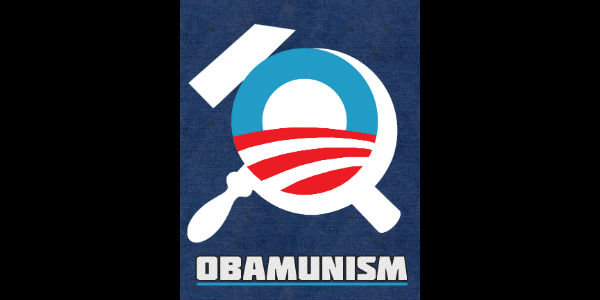How our social circles shape the way we think about supporters of another party
It is a truism that American politics has become more polarised in recent years. But how big a gap between Democrats and Republicans do people actually perceive? And how is that gap influenced by their social circles – for example, for a Democrat who only talks about politics with other Democrats? Jeffrey Lyons (Boise State University) and Anand Edward Sokhey (University of Colorado at Boulder) find evidence that exposure to disagreements leads people to perceive supporters of the ‘other’ party as more moderate.

Image: Brett Tatman via a CC-BY-NC-SA 2.0 licence
Discussion of polarisation has become an almost a routine part of popular political commentary in the United States. Pundits and politicos continue to grapple with the divides in America’s institutions and mass public –which hamper policymaking and, perhaps even more critically, relations between ordinary citizens. On the scholarly side there has also been considerable ink spilled on the causes and consequences of polarisation. This inspired us to take a slightly different tack in examining such dynamics. Rather than looking to actual levels of opinion or policy difference, we sought to understand how citizens perceive of the gap between the parties in the electorate. That is, our approach presupposes that polarisation exists in two ways: actual amount (reality), and what citizens think exists (perception).
What explains why some citizens think that there is a wide gap between Democrats and Republicans, while others believe that the public is more moderate? We address this question in our recent paper appearing in the journal Political Behavior titled “Discussion Networks, Issues, and Perceptions of Polarization in the American Electorate.” We consider how the micro-social environments that surround people – specifically, those core people with whom individuals discuss politics – structure their perceptions of polarisation in the United States. An established body of work finds that the interactions that we have with peers influence a host of political attitudes and behaviours. Importantly, these interactions also have the potential to inform us about those who do not share out partisan leanings, working in tandem with well-documented processes concerning in-groups and out-groups.
For example, consider a Democrat who only interacts with other Democrats. Such an individual has limited exposure to Republicans in everyday life, and probably only learns about Republican attitudes and beliefs through the media or from Republican elites. There is ample reason to suspect that such a view of “Republicans’” political preferences would highlight the most polarised aspects of that party (party activists and elites), while relaying little about the diversity of beliefs or nuanced attitudes held by members of the mass public who identify as part of that out-group. Put differently, the Democrat who does not discuss political matters with many (if any) Republicans may take on distinct views about the beliefs of Republicans (“they are all the same), and about how they are different from Democrats (“all Republicans’ views are far away from all Democrats’ views”).Of course, the reverse should hold for Republicans who only talk to other Republicans and have limited interactions with Democrats.
To study these dynamics, we need two kinds of information about members of the public: who they talk with about politics (i.e., discussion network information), and perceptions of same (opposing) partisans in the mass public. The second component is especially tricky, as polarisation is inherently a question about distributions. That is, do people think that most Democrats and Republicans, respectively, are clustered at the extremes or located more centrally? Do people see overlaps or distance between these camps?
Fortunately, the American National Election Studies 2008-09 Panel Study contains both needed components, and we used them to assess the relationship between networks and polarisation. To gauge networks, we draw upon a series of questions asking respondents to identify the people who they discuss politics with, and how much they disagree with each individual. This allows us to measure how much exposure people have to other viewpoints (Democrats/Republicans) in their core social network.
Second, we take advantage of a unique series of questions asking respondents, for a series of four political issues, to report how many Republicans and Democrats they believe hold different stances. Respondents were presented with each topic (government healthcare, Iraq troop withdrawal, government wiretapping, and illegal immigration) and then asked to form a distribution – that is, to slide five bars up or down to represent how many Democrats and Republicans strongly favour, somewhat favour, neither favour nor oppose, somewhat oppose, or strongly oppose the policy. A person who viewed his or her fellow citizens as being very polarised might slide create a distribution where all of the Democrats strongly support a government healthcare plan, and all of the Republicans strongly oppose the plan, with no partisans in the middle. Alternatively, someone who sees the electorate as being less polarised might build a distribution where few Democrats strongly support government healthcare but many somewhat support or neither support nor oppose. Thus, this exercise allows people to indicate how many people of both parties they view as holding extreme (polarised) opinions compared to the number holding more moderate viewpoints. We were interested in two aspects of the distributions built by survey respondents: how much space there was between the parties (“Is there much overlap or not?”), and how much homogeneity exists within the party (“Do all Democrats and Republicans have similar beliefs, or is there diversity of opinion within each?”).
With this information in hand, we compared the distributions that people built based on whether individuals are exposed to disagreement in their social circles. The results paint a picture that largely aligns with our expectations about the role of discussion in shaping perceptions of polarisation. Across three of the four issues for which respondents were asked to build distributions, those who were exposed to more disagreement in their conversations thought that there was less distance between the two parties. This means that when exposed to divergent views, people actually saw more similarity between the parties than when people were only exposed to those who share their perspectives. When we looked to amounts of similarity or difference within each party, the results were less consistent. Still, across three of the issues there was again evidence pointing in the direction that exposure to disagreement moderates assessments. Those who discussed political matters with people who disagreed with them were more likely to build distributions of Democrats and Republicans that indicated more diversity within the groups.
What do we make of this? For one, we find evidence that our offline social settings structure our perceptions of opposing partisans. This gels with concerns raised elsewhere about the dangers of “echo chambers” – of individuals being surrounded by the like-minded in different contexts of life, and frequently talked about in the online context. Second, this relationship between our core networks and perceptions matters, and may in fact be more important than reality. If people believe that a great chasm exists between the parties, they may be less likely to engage with those from the other party or seek compromise. If our friends, family and co-workers condition how we see the bigger picture of partisans in the public sphere, then the modal condition in the American public – agreeable social circles – serves to reinforce such processes. Changing perceptions of “the other side” may require concerted efforts to engage those we disagree with, beyond logging off social media.
This post represents the views of the authors and not those of Democratic Audit.
 Jeffrey Lyons is an Assistant Professor in the School of Public Service at Boise State University.
Jeffrey Lyons is an Assistant Professor in the School of Public Service at Boise State University.
 Anand Edward Sokhey is an Associate Professor of Political Science at the University of Colorado at Boulder, where he is the associate director of the American Politics Research Lab and the incoming director of the LeRoy Keller Center for the Study of the First Amendment.
Anand Edward Sokhey is an Associate Professor of Political Science at the University of Colorado at Boulder, where he is the associate director of the American Politics Research Lab and the incoming director of the LeRoy Keller Center for the Study of the First Amendment.





 Democratic Audit's core funding is provided by the Joseph Rowntree Charitable Trust. Additional funding is provided by the London School of Economics.
Democratic Audit's core funding is provided by the Joseph Rowntree Charitable Trust. Additional funding is provided by the London School of Economics.